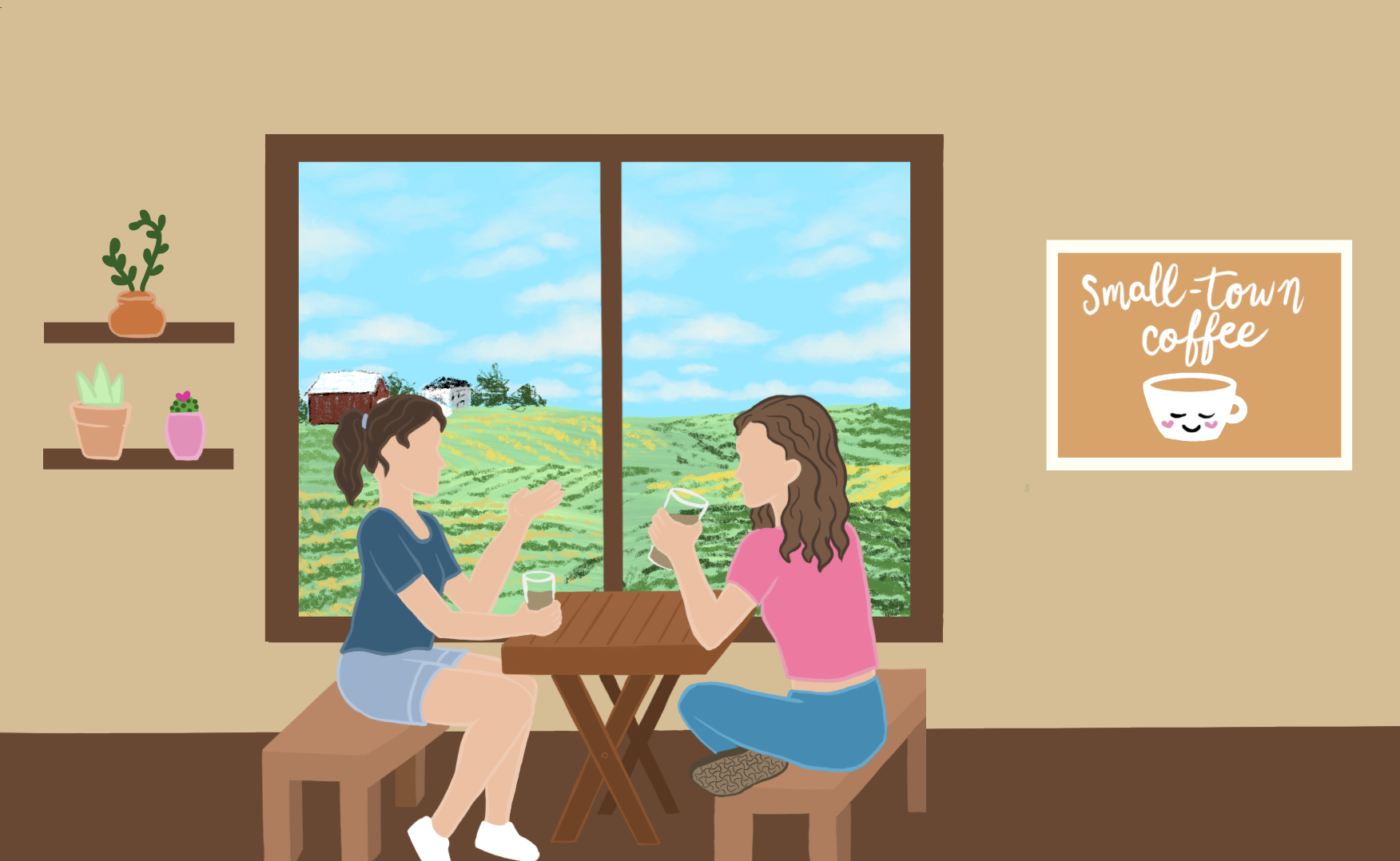When you hear the word “rural,” what do you think of? Miles and miles of cornfields? Whatever image may have come to your mind, let me offer you mine: I think of my sister and me sitting down at our favorite local coffee shop, sipping lavender honey lattes as we run into multiple friends from high school, who are off at college studying everything from cybersecurity to bioengineering.
My guess is you didn’t have that picture in your head. Why? Because when many of you read the word “rural,” you already have preconceived notions of what the word means.
The majority of these perceptions are less than flattering, painting people from rural areas as uneducated, uncouth white people proudly donning infamous MAGA hats and espousing bigoted ideologies regarding minority groups. Yet these details are often overemphasized, leading to the idea that rural voters are the opposite of their urban, liberal counterparts. Studies on rural voters highlight a greater level of diversity in opinions and demographics that are not often seen or acknowledged by urban voters—although rural areas still underrepresent communities of color compared to their urban counterparts, Asian and Hispanic communities in rural areas have grown by 60 percent in the past decade. In addition, rural people do not often see themselves represented in either local or national news stories, meaning mainstream representation of rural life is often limited or inaccurate.
Many rural communities were created through socioeconomic and racial isolation, from English settlers looking to profit off Southern cash crops to European immigrants escaping religious and political persecution in the U.S.’s urban centers. Yet not all rural inhabitants made the choice to move there. Historically, enslaved people were forced to live on remote plantations, and after the Emancipation Proclamation, faced financial barriers—at times, even bodily harm—in moving to urban areas due to postbellum sharecropping and Jim Crow-era racism. As a result, rural communities, while not a monolith, are more likely to be more homogenous than metropolitan areas.
The negative stereotypes surrounding people in rural areas tend to undermine the problems faced by these individuals. Rural communities were once an integral part of the American economic system through farming, mining, and local economies. But in the last fifty years, these industries have fallen into despair as industrial jobs have been shipped overseas by megacorporations, stripping people of financial independence and access to healthcare along with other resources—disparities exacerbated by an individual’s race and ethnicity.
This surface-level understanding of rural history and culture has permeated Georgetown, resulting in prevalent stereotypes of rural people as prejudiced and uneducated, even for individuals in higher education. From being called a hick (who even says that anymore?) to witnessing an outlandish comparison between cannibals and rural Iowans, my first semester at Georgetown showed me that those at Georgetown are not exempt from these biases. So, if bias against people from rural communities permeates our campus, why are we not proactively addressing it?
As a four-year university, Georgetown attracts students pursuing careers that require non-manual training, such as attorneys, politicians, and business people: white-collar jobs often concentrated in urban or suburban areas. Since kids who grew up in white-collar homes are more likely to pursue white-collar careers and attend college, students at universities—especially elite universities like Georgetown—are more likely to come from urban and suburban areas. Rural students, on the other hand, tend to have blue-collar parents and are more likely to obtain blue-collar jobs and attend alternative learning establishments like trade schools. And while nearly 90 percent of Americans believe trade schools won’t generate high-paying jobs, more than a third of Americans choose to attend one, highlighting the bias that most impacts rural communities.
At Georgetown, this prejudice is so pervasive that many either ignore or actively perpetrate it. I can still remember the heat flooding my cheeks when a professor compared me to a “country bumpkin” who “made it to the big city” in the middle of class, as if where I was raised had anything to do with my intelligence, success, or life goals. At Georgetown, we’ve gotten so used to categorizing people from rural areas as lesser-than that we accept it as a hardwired truth instead of a cultural construct.
Another reason this bias is rarely discussed stems from the lack of academic resources we have to study it. It’s quite likely that since people from rural areas face more barriers in joining the highest levels of academia—like having limited local access to higher post-secondary education—there is no academic field of ‘rural studies’ or college courses that critically analyze the history and current situation.
The conversation must also begin within the Georgetown community by asking rural students, staff, and faculty about what they need and want to achieve full inclusion. Directly naming and discussing this “anti-rural bias” in conversations about socioeconomic elitism and inclusion is an important first step toward remedying it. Students from rural areas are already directing this initiative with actions like forming an affinity group or advocating for classes on rural studies. Institutional recognition and support can help address the pervasive cultural bias displayed by professors and students. But that doesn’t mean we can do it alone. What we need is for people to start examining their own blind spots on the subject and to inform themselves by asking rural members of our community about our experiences. I’m happy to share my story, and trust me, I’m not the only one.
When you think of the word “rural,” perhaps you also think of intense hometown pride, and you’re not wrong; my roots run deep, and I’d love to share my regionality with y’all. So just ask and listen, and we can move that much closer to ending Georgetown’s anti-rural bias.





